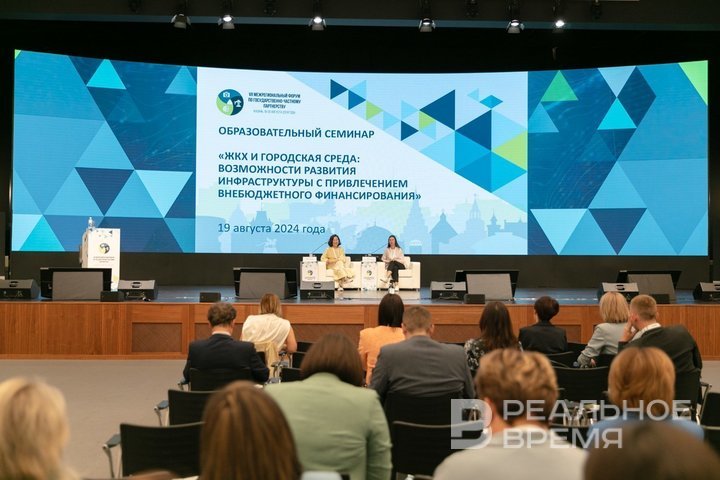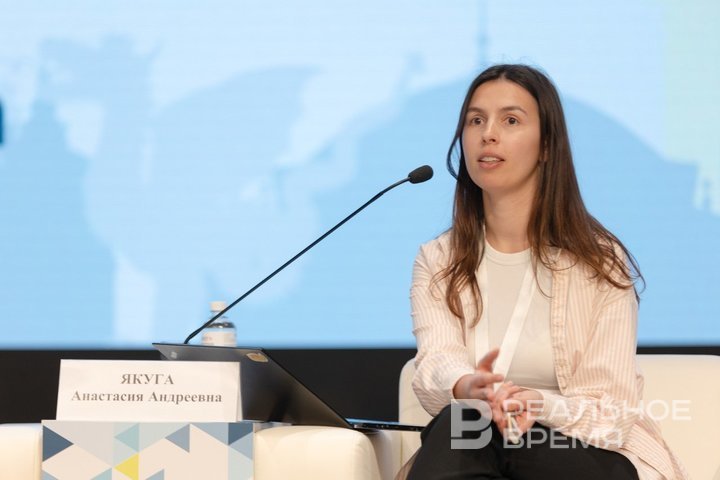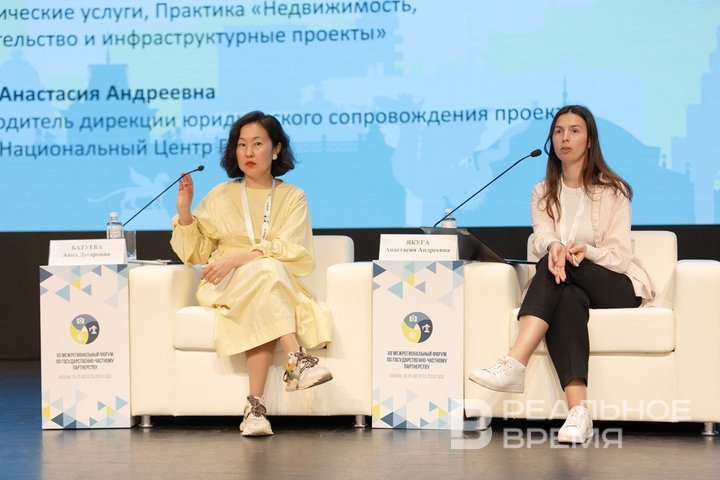The importance of marketing justification, changes in land use rules and list of real estate property
The nuances of public-private partnership projects in landscaping were discussed in Kazan

In 2023, the total volume of the public-private partnership (PPP) market in Russia amounted to 720 billion rubles. 409 billion of this amount are extra-budgetary sources of financing. By the end of the year, 126 PPP projects were operating in Tatarstan for a total of 113 billion rubles. This number ensured the republic’s 4th place in a thematic federal rating of regions. The features of PPP projects in public space landscaping were discussed at the 7th Interregional PPP Industry Forum at a corresponding lecture. Speakers, Director of Trust Technologies Anna Batuyeva and head of the Directorate of Legal Support for Projects of the National PPP Centrr Anastasia Yakuga spoke about the stages of implementing improvements within the framework of PPP projects and the nuances that must be taken into account before concluding agreements. Read more details about all these in a report of Realnoe Vremya.
The fountain is a real estate facility, asphalt is not
When implementing PPP projects in public space landscaping, it is necessary to pay attention to many nuances. First, it is necessary to take into account the procedure for involving the object in the perimeter of the project. This was discussed at the 7thInterregional Industry Forum on PPP by Director of Trust Technologies Anna Batuyeva and Head of the Directorate of Legal Support for Projects of the National PPP Centre Anastasia Yakuga.
For the improvement of a territory within a PPP, it is necessary that at least one real estate facility be included in it, Anastasia Yakuga began. At the same time, according to the law, not only buildings can be considered real estate.
“Do you think a fountain is real estate?” she asked the audience, the majority voted for the ‘no’ option.

However, the majority turned out to be wrong. According to the definitions of the Supreme Court of Russia, fountains are real estate, but asphalt and paths are not.
To support of her words, the speaker provided an example of one of the parks in Volgograd. During its improvement, the stands, fountain and a memorial complex were classified as real estate. Small architectural forms, fences, lawns and landscaping elements were not included in this list.
Then Anna Batuyeva spoke about the nuances of the obligations of the parties to the project:
“Thus, in improvement projects, the private partner has two main blocks of obligations — investment and operational. Investment obligations involve the reconstruction or creation of a facility.”
The investor also has social obligations: preferential prices for categories of the population, the use of property for public purposes, the use of property by sports teams or educational institutions.
Changes in land use rules are possible
After explaining the nuances and general definitions, the speakers moved on to the roadmap. Anna Batuyeva began with collecting and updating all documents and data.
According to the specialist, when preparing a PPP project, it is necessary to analyse regional and municipal acts, including those related to the improvement facility.
The next stage is the analysis of data, documents on the main object of the agreement or on other property that will be transferred to the project. We need to check the ownership of the objects of attraction. It will be necessary to check the types of permitted use for land plots. If the types of permitted use, for example, do not allow the type of activity planned for the project, then initiate changes in advance to the land use and development rules of the municipality,” Batuyeva added.

The speaker explained what documents are also needed depending on the status of the facility. Thus, in parks, according to the law, it is necessary to find real estate and analyse it. If you plan to improve a hotel, you need to find out about the status of a cultural heritage site. And finally, if the site is a cultural heritage, you need to provide a security certificate and information on the level of the cultural heritage site status (federal, regional, municipal), if a land plot — a permitted use certificate.
The next step is to determine investment obligations, Yakuga continued. According to her, here you need to answer “many questions.”
“If you divide them into categories, then these are questions related to the design stage and the implementation stage.”
“Marketing justification makes the implementation of the project more predictable”
At the first stage of preparation, it is necessary to draw up a marketing justification for the feasibility of implementing the project, said Yakuga. It should outline the essence and relevance of the project, regulatory features, legal scheme and financial parameters.
“Justification makes the implementation of the project more predictable. If it is developed qualitatively, it will reflect all potential major risks. Such a concept will become the basis for the subsequent development of documents. Also at this stage, it may turn out that work on objects in such a volume is not needed at all,” she noted.
Then one can move on to the terms of the agreement. According to the speakers’ presentation, different rules apply to private and public initiatives.

For a public initiative, the terms of the agreement are initially determined by the public party. They can be changed based as a result of negotiations.
In the case of a private initiative, the conditions are similarly determined by the private party. They can be changed without exceptional cases.The presentation also provided examples of when it is possible to begin fulfilling the preliminary conditions for the start of work.